Estimated reading time 15 minutes, 32 seconds.
On May 27, Kevin LaRosa II planned to sit in an IMAX theater watching Top Gun: Maverick. He wouldn’t be the only one in the room who grew up watching the original 1986 flick, but he’d almost certainly be the only one who was instrumental in the making of the long-awaited sequel.
“I want to see how people at the theater react to what we’ve done,” said LaRosa, a third-generation aviator and a renowned aerial coordinator and stunt pilot for the motion picture industry. With such credits under his belt as Iron Man, The Avengers, and Transformers 5, it means something when LaRosa says the making of Top Gun: Maverick challenged him like never before.
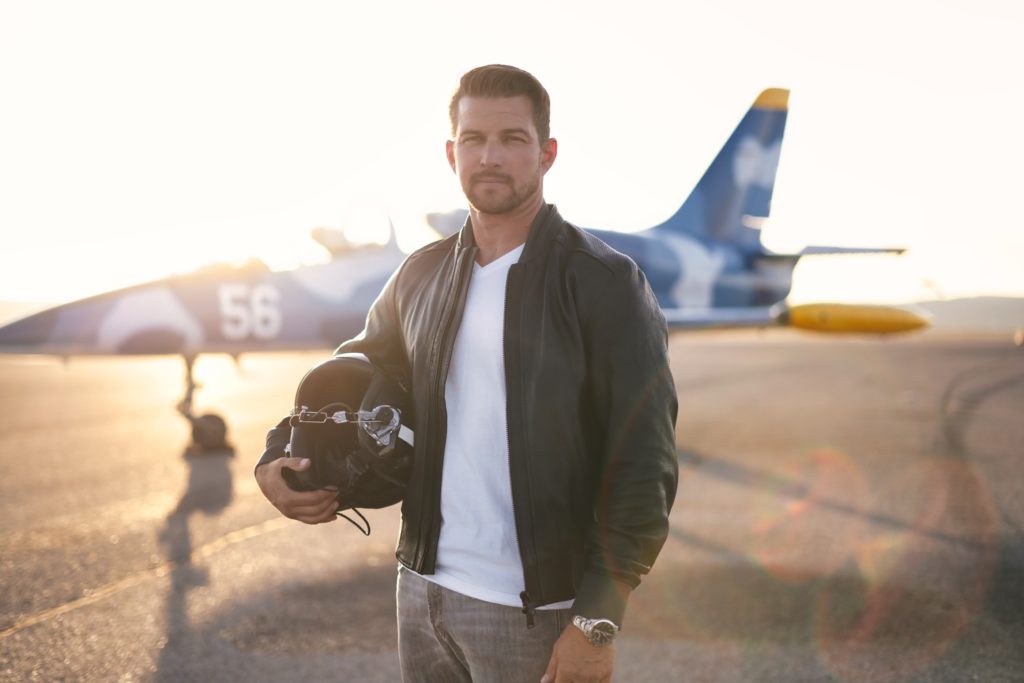
“This is probably the first movie I’ve worked on where the goal was to create something that hadn’t been done before, using technology in a new way,” he told Skies in late april. “A lot of time and energy went into figuring out how to do that.”
Multiple crew and cast members have referred to Top Gun: Maverick as a “love letter to aviation.” LaRosa said that’s because, from the very beginning, the emphasis was always on keeping it real.
“It’s about aviation to its core,” he said. “The biggest thing I’d mention is that everyone making the movie, starting from the top, wanted the movie to be practically real. That was the biggest point driven home right from the beginning. That created a large role for my team, from start to finish.”
With about 6,000 hours flying fixed- and rotary-wing aircraft as well as drones, LaRosa basically grew up at the airport, inheriting the “need for speed” from his grandfather and father before him. Kevin LaRosa Sr. is an accomplished motion picture stunt pilot and aerial coordinator who began taking his son to movie shoots when he was just 10 years old. Today, LaRosa II is one of the most well-known and respected pilot and aerial coordinators in Hollywood and around the world.
For Top Gun: Maverick, LaRosa assembled a team of 20 industry professionals to coordinate the filming of aerial sequences. Together, they collaborated with the Department of Defense (DOD) and U.S. Navy pilots and ground crew members who appear in the film.
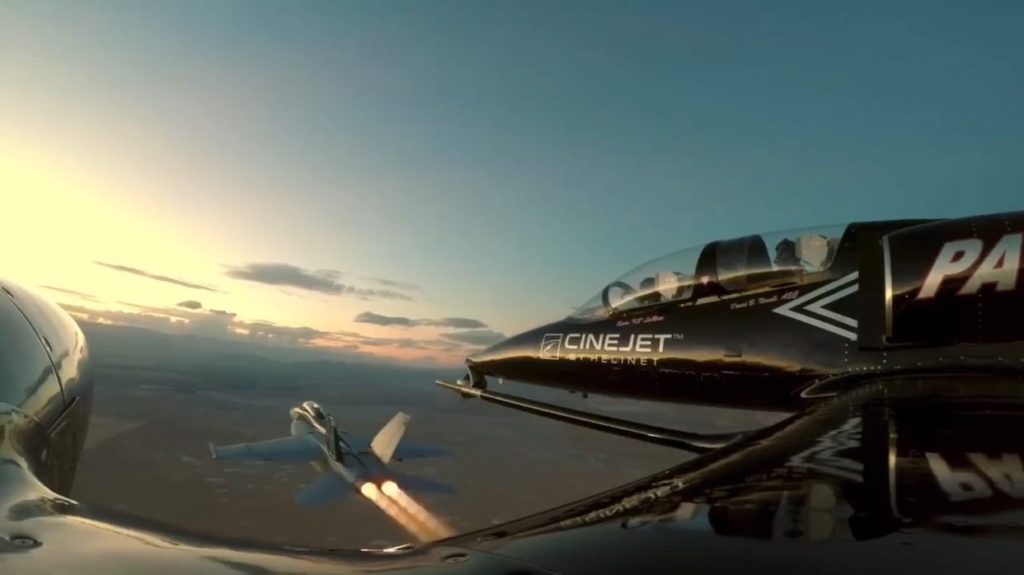
To catch the movie’s explosive action, LaRosa employed three aerial camera platforms.
First is the CineJet, a highly-modified Aero L-39 Albatros jet conceived by LaRosa and developed in partnership with the Patriots Jet Team and Helinet Aviation Services. On its nose, the CineJet carries a custom gyro-stabilized Shotover F1 Rush camera system that excels at catching high-speed action. On board the jet was LaRosa, as pilot, and an aerial director of photography, or aerial DP, to compose each shot. Two CineJets were built, a primary and a backup, travelling together to ensure 100 percent availability.
“The L-39 has a long nose where the camera can be mounted way forward of the wingtips,” explained LaRosa. “It also has a very flat belly. With a slight drop down, you can look directly behind you.”
The jet is also highly maneuverable and offers excellent visibility with its bubble canopy. The speed differential between the L-39 and the F/A-18 was actually a bonus, according to LaRosa, who said it helped to show dynamic speed and energy.
“F/A-18s are very fast, much faster than our platforms. But having that differential really makes the image look good as they fly by — the camera gimbal tracks them as they go by,” he explained. “There are some moments where I live in formation with these aircraft, but for a lot of the story we want them to light the afterburners and show that speed differential.”

Tom Cruise pictured on the set of Top Gun: Maverick. Paramount Photo 
Tom Cruise, Glen Powell, Jay Ellis, and director Joseph Kosinski on the set of Top Gun: Maverick. Paramount Photo

Miles Teller (pictured) plays “Rooster” in Top Gun: Maverick. Paramount Photo 
LaRosa is an accomplished ATP rated pilot and works heavily in the motion picture and TV industries, coordinating and directing film sequences in the air and on the ground. Helinet Aviation Photo
The second civilian camera ship was a private Embraer Phenom 300 equipped with Shotover cameras on both the nose and tail, for both wide and tight angles. The Phenom has a longer range than the CineJet and was used when filming over water, with two pilots and two aerial DPs on board.
Finally, LaRosa said an Airbus Helicopters AS350 AStar carried a larger Shotover gimbal. Each aircraft had a crew chief and every Shotover system had its own technician.
Footage from the camera ships was combined with video generated by each Super Hornet’s six Sony Venice 6K cameras, two forward-facing and four aft-facing. As well, ground-based cameras captured flybys at blistering speed.
“When you mix all of those assets together, you really come away with a special way to tell the story,” said LaRosa. “The F/A-18 is an amazing aircraft. We’re always trying to show off its capabilities. That includes high G and high alpha maneuvers; it creates amazing vapors.”
The quest for realism was driven by Tom Cruise, the star of the film and himself a commercial pilot. He reportedly fell in love with aviation while filming the original Top Gun in 1986, and by 1994 had earned his license. Since then, he’s become famous for doing his own aviation stunts, including a difficult corkscrew dive in an Airbus H125 helicopter in Mission: Impossible – Fallout.
As an aviator, Cruise knows it’s impossible to simulate the effect of G forces on a pilot’s face. So, right from the start, there was an emphasis on training the talent for Top Gun: Maverick.

An Embraer Phenom 300 was also used as an aerial camera platform to film the movie. Photo courtesy of Kevin LaRosa II 
The Phenom 300 was equipped with Shotover cameras on both the nose and tail, for both wide and tight angles. Photo courtesy of Kevin LaRosa II
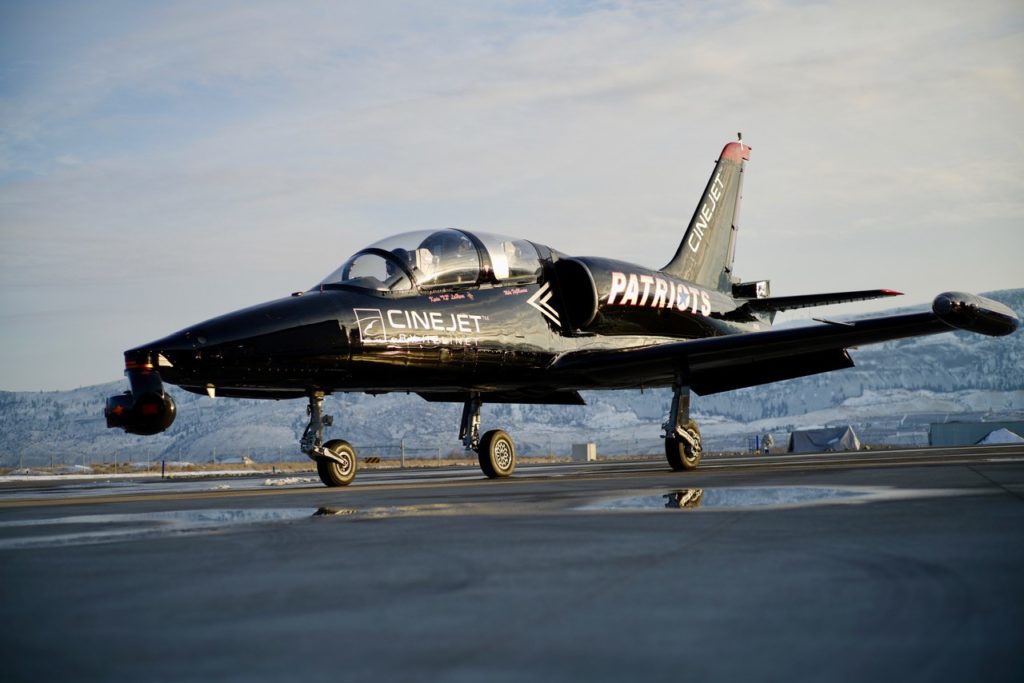
“The Navy had some strict guidance,” explained LaRosa. “You do have to check all the boxes if you fly in DOD aircraft and it was pretty amazing what all the actors went through. Aside from egress and emergency training, Tom (Cruise) built a program that involved my dad and I teaching the talent how to fly Cessna 172s and getting them used to talking on the radio. Then, they went to aerobatics in an Extra EA-300 with Chuck Coleman to increase their G tolerance. Once they were confident, they graduated into the L-39 at the Patriot Jet Team, and by the time they got to the F/A-18 Super Hornet, they were seasoned aviators.”
But actor training was only one part of the quest to bring audience members right into the fighter jet cockpit. The team behind Top Gun: Maverick worked hard to cover every angle.
“Before we even started the shoot, and this was heavily driven by Tom Cruise, for every aerial scene there was a massive effort to shoot sequences that were ground-breaking and never seen before,” recalled LaRosa. “We had the latest and greatest technology. We put together a menu book of the most exciting and dramatic aerial and camera moves we could think of. We went out and tested these moves and found what worked and what didn’t work.”
It took a year to film Top Gun: Maverick. While shooting was largely carried out at a series of West Coast naval bases, including San Diego, California; Whidbey Island, Washington; and Fallon, Nevada, off-base locations were scouted with great care. Detailed mission plans accounted for weather and lighting conditions — all of which had to gel in order to get Top Gun: Maverick’s unforgettable aerial sequences.
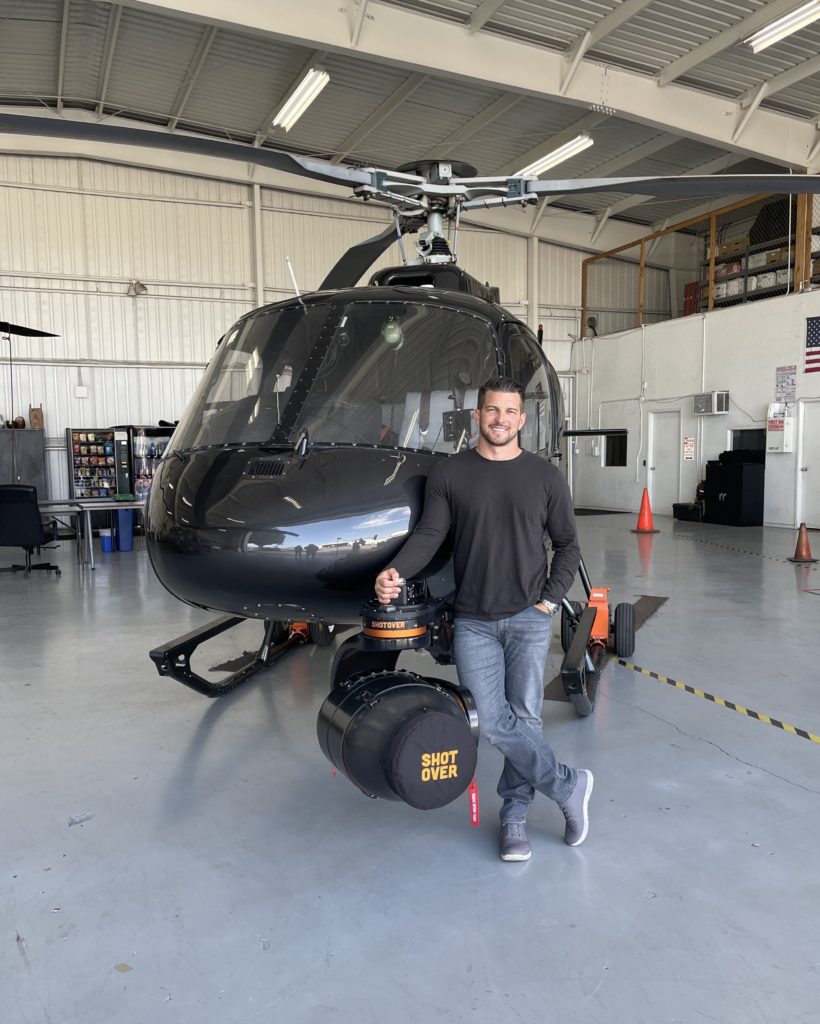
The canyon and mountain flying missions stand out the most for LaRosa. He recounted one of his favorites: “A piece of terrain in the film is some of the most amazing I’ve ever seen. We filmed in the Cascade Range, around sheer vertical cliffs that are 7,000 or 8,000 feet tall. When we shot them, they were iced over — it was very impressive terrain that looks like it should be somewhere else in the world.”
Flying out of Naval Air Station Whidbey Island, LaRosa’s team scouted the area with helicopters first, putting together detailed charts and mapping out the operation. He then directed multiple camera ships — including the Airbus helicopter and the Phenom 300 camera jet — as well as several F/A-18 Super Hornets, pilots, and support crews during the shooting of the mountain flying scene.
LaRosa flew the helicopter deep into the Cascade Range to capture the Super Hornets racing over remote, wild terrain.
“I mean, it’s incredible! There are some notable sequences in the movie climbing up these cliff faces and rolling inverted and going down the back side, using multiple platforms at once, with myself either leading them or chasing them — and avoiding wake turbulence at all costs,” he recounted. “This is probably the most high-energy, low-level dynamic flying I’ve ever accomplished in my career and some of the most impressive flying I’ve ever seen. I really feel like that footage will live in aviation motion picture history.”
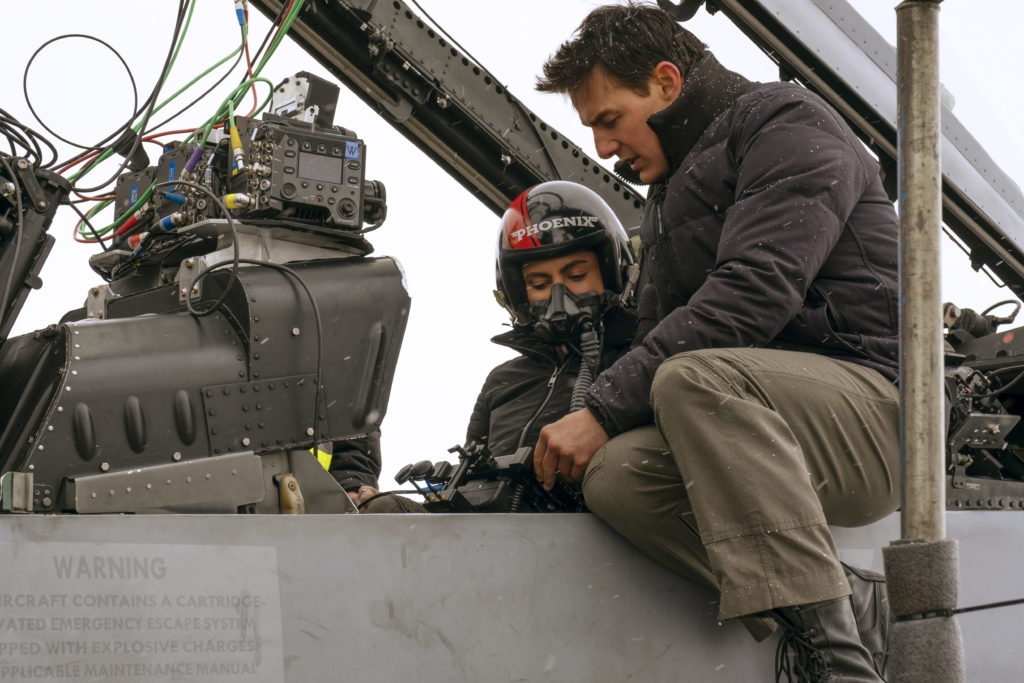
The crew behind Top Gun: Maverick never settled for mediocre. LaRosa admitted that once in a while they’d experience a “one-take wonder” — but typically, getting the right shot took “three to five takes, or sometimes even a couple of days.”
Compromise was never an option.
“To make the audience feel like they are part of that thrill ride, you have to mix in those different angles,” he continued. “We went to great lengths until we perfected something. A lot of the time, since we were dealing with new technology, there was a learning curve.”
That modern technology is what enables the sequel’s cinematography to be light years ahead of the original Top Gun — which LaRosa admits was still pretty cool at the time.
“Back then, they used a Learjet with a partially stabilized system mounted inside the aircraft, and a series of prisms to shoot outside,” he said. “Our team is flying state-of-the-art camera packages with the most modern and advanced stabilized camera gimbals mounted on our camera ships.
“Furthermore, we are hard-mounting those same incredible camera packages to the inside and outside of the F/A-18 Super Hornets. All of these different angles helped director Joseph Kosinski tell the amazing story that is Top Gun: Maverick.”
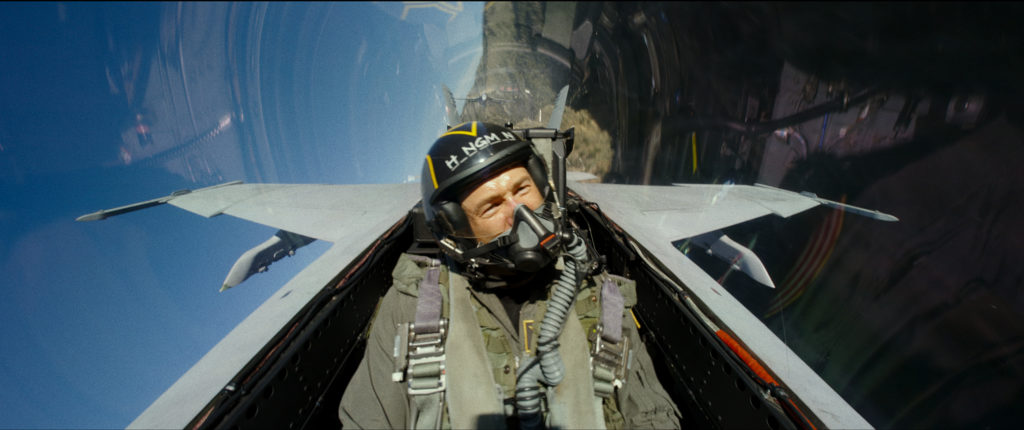
LaRosa — who was born the same year the original movie was released — said he’s watched Top Gun a thousand times.
“I’ve always wanted to be a motion picture stunt pilot like my dad, but the Top Gun movie was the only thing that almost took me away to the Navy,” he said with a laugh. “I absolutely reconnected with the road I didn’t choose while filming Top Gun: Maverick. Feeling the camaraderie between my civilian team and the Navy pilots was a childhood dream. Making this movie was an adventure I’ll never forget.”
LaRosa wasn’t the only one who was interested in becoming a naval aviator after watching Top Gun. It’s been reported that U.S Navy applications increased by 500 percent following the movie’s release in the late 1980s.
“There’s no question in my mind, based on the information the Navy gave me, that it will absolutely happen again,” said LaRosa of the sequel.
“Millions of people will see this movie and I think they will fall in love with aviation.”
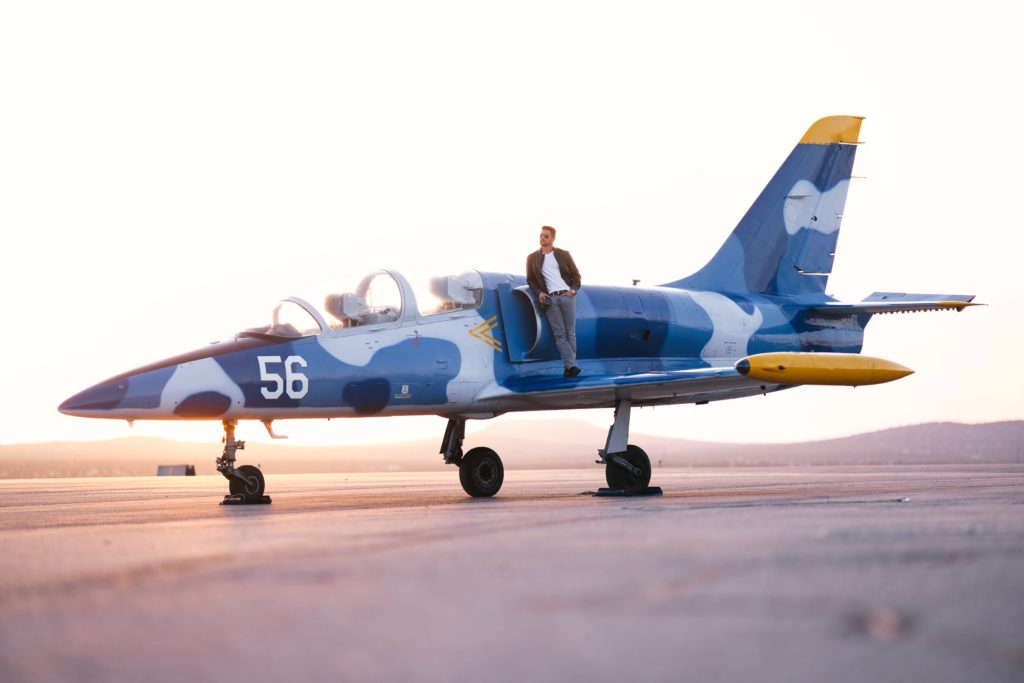
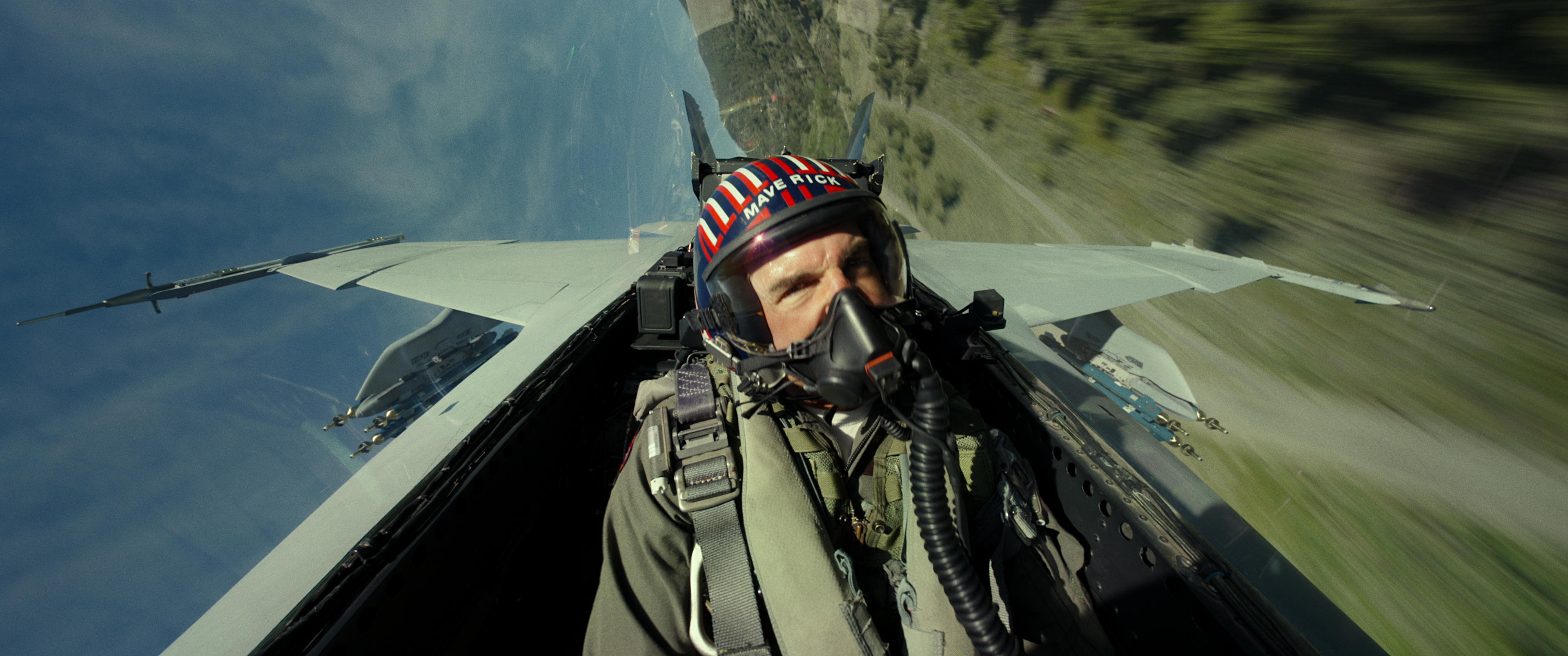

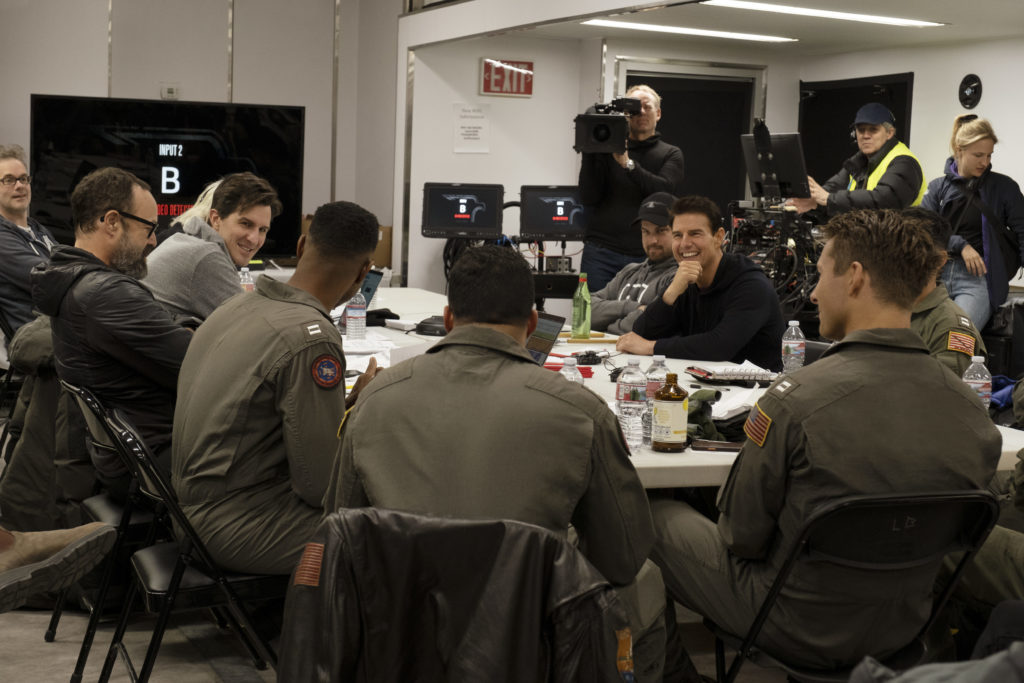
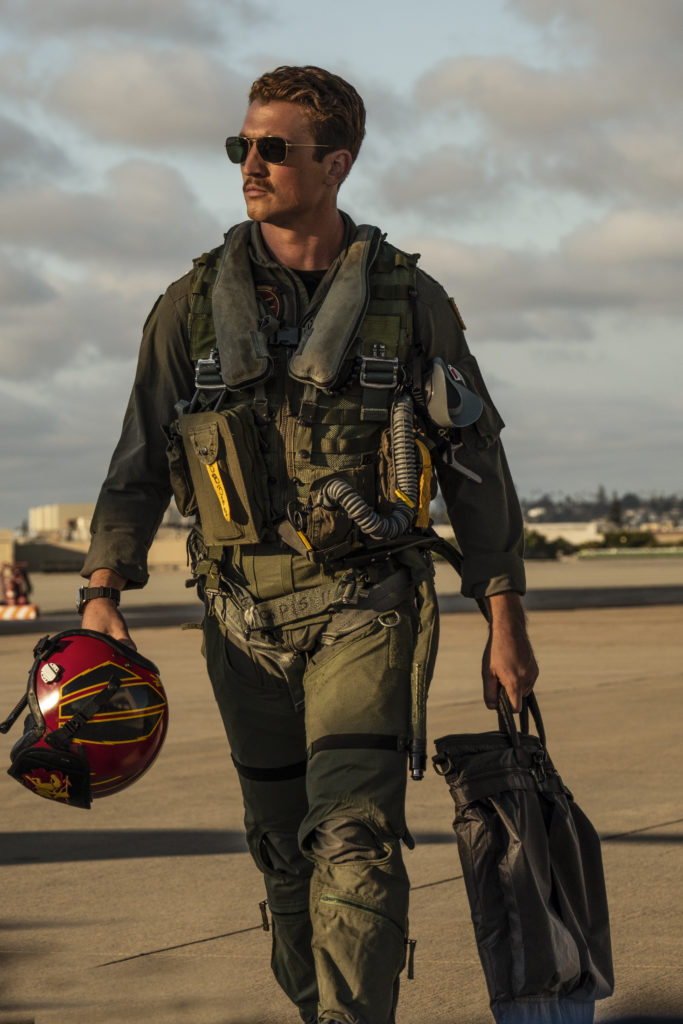
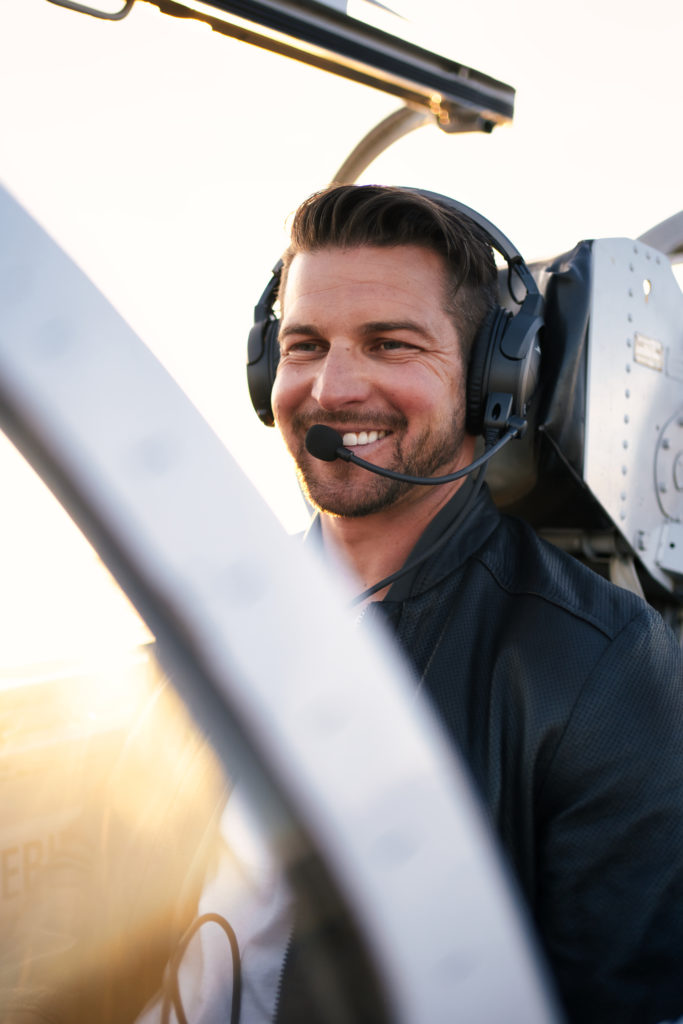
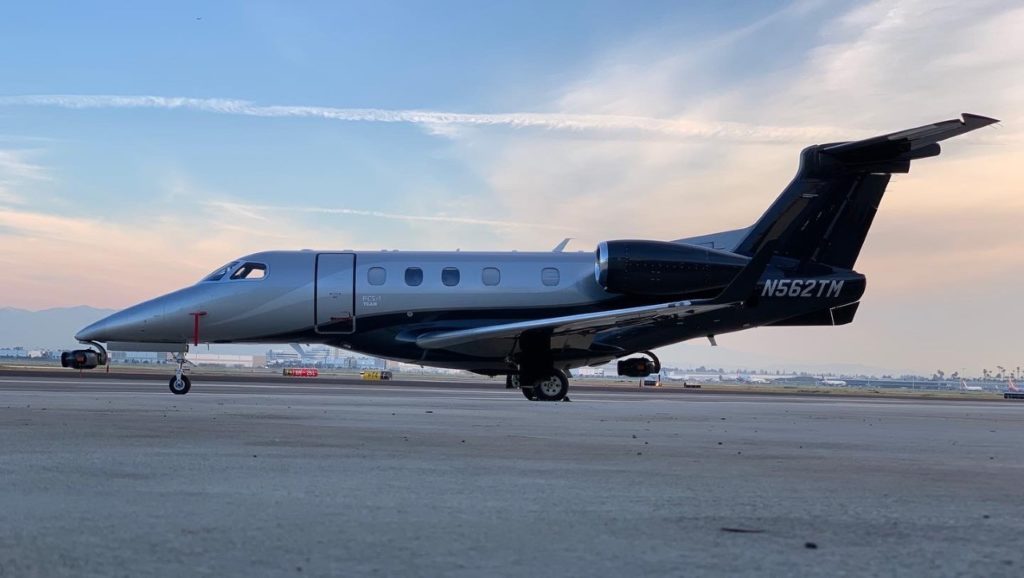


It is a shame that they did not follow the 500 feet rule as no plane can come closer to another plane and be under 500 feet
Why did they not use that rule and eliminate the CGI for that maneuver of cruise going between two other planes?